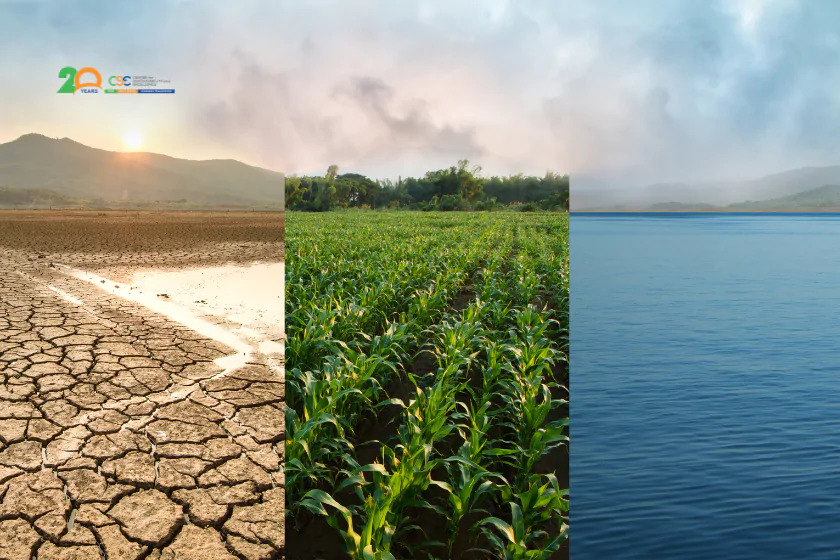As the global climate crisis accelerates, the United States stands at a pivotal intersection where local innovation, state-level governance, and federal systems interact to drive environmental change. While national climate policies fluctuate, a group of forward-thinking states—many of which now top national quality-of-life and sustainability rankings—are stepping up.
From Utah to Washington, these states are not only improving their citizens’ well-being but also laying the groundwork for climate resilience, clean energy innovation, and green infrastructure, through and climate action.
Local Power, National Influence and climate action
Despite federal setbacks or slowdowns, U.S. states have demonstrated that progressive, data-driven climate action thrives at the subnational level. Many of the 2025 top-performing states are already being recognized not just for quality of life, but also for environmental leadership.
Let’s take a closer look at how some of these top-ranked states are emerging as sustainability role models:
✅ Utah
Ranked among the top 10 best states, Utah is making rapid strides in clean energy and EV adoption. Salt Lake City’s “Climate Positive SLC Plan” targets 100% renewable electricity by 2032 and 80% GHG reduction by 2040.
✅ Vermont
With nearly 100% of its electricity coming from renewable sources, Vermont excels in water conservation, waste reduction, and sustainability education. It also ranks among the lowest in CO₂ emissions per capita.
✅ Massachusetts
A consistent sustainability leader, Massachusetts features second-lowest water usage, fifth-lowest energy consumption, and is ranked top five in solar infrastructure. It has also led national efforts in green building, transportation, and water conservation programs.
✅ Washington
With aggressive renewable energy targets, strong transit systems, and green manufacturing innovation, Washington is both a natural resource-rich and policy-forward state. Its climate goals align with international benchmarks, making it a climate leader in the Pacific Northwest.
✅ Florida
Despite vulnerability to sea-level rise, Florida is ranked #3 in the U.S. for solar power generation capacity and continues to support climate-smart infrastructure in cities like Miami and Orlando.
Other top-ranking states such as New Hampshire, Minnesota, Idaho, South Dakota, and Nebraska are also making promising strides in renewable energy adoption, air quality improvements, and sustainable agriculture.
The Metrics That Matter
The Forbes Sustainability Index and U.S. News rankings both highlight key dimensions that define state sustainability and livability:
- Water usage per capita
- Energy consumption
- Solar infrastructure
- Waste management and recycling
- Climate resilience and emissions targets
States that scored high in these categories—such as Vermont, Massachusetts, Florida, and Utah—demonstrate how environmental leadership also translates into economic growth, health benefits, and quality of life gains.
Why Becoming a Certified Sustainability ESG Professional Matters Right Now
These advancements aren’t accidental—they’re driven by people. The rise of state-level climate leadership underscores the urgent need for skilled professionals who can:
- Design local and regional sustainability strategies
- Implement science-based targets and ESG frameworks
- Collaborate across sectors on green innovation and impact measurement
Through our programs, you’ll gain:
✅ In-depth understanding of policy and practice in top-performing U.S. states
✅ Tools to lead and scale sustainability efforts in your sector
✅ Access to expert instructors and impact networks
Let’s look at some of the key concerns and challenges that US corporations face today. These are major issues for which senior executives need to quickly gain an in-depth understanding of and learn how to address them in the immediate future:
-
Proving Return on Investment (ROI)
- Why it’s #1: The most cited barrier by executives. Despite growing investment, only 12% can confidently track sustainability ROI, making it hard to justify spending and prioritize projects.
-
Geopolitical and Economic Instability
- Why it’s critical: Ongoing wars, inflation, and trade disruptions have introduced unpredictability in sourcing, operations, and regulation, undermining sustainability continuity.
-
Lack of Unified Climate Policy
- Why it’s urgent: As countries, particularly the U.S., pull back from global climate agreements, companies are left without consistent rules or frameworks to guide long-term strategy.
-
Greenwashing Scrutiny and Regulatory Pressure
- Why it matters: New legislation and watchdogs are cracking down on vague or inflated ESG claims. This puts pressure on companies to develop robust, auditable data and metrics.
-
Supply Chain Disruptions
- Why it’s rising: Climate events, political tensions, and resource scarcity have all impacted the availability of sustainable materials and tech—affecting everything from renewable energy projects to recycled packaging.
-
Talent Shortages in Sustainability Roles
- Why it’s emerging fast: The demand for experts in climate science, ESG reporting, AI analytics, and renewable energy outpaces supply, delaying implementation across sectors.
-
Difficulty Scaling AI and Tech Solutions
- Why it’s growing: While AI is being embraced, many firms struggle with integration, data infrastructure, and ethical concerns—creating a gap between ambition and execution.
-
Measuring Impact Across the Value Chain
- Why it’s persistent: Tracking sustainability performance across a global footprint remains a complex and costly endeavor, particularly with scope 3 emissions.
-
Investor and Stakeholder Pressure
- Why it’s mixed: While investors push for ESG metrics, some also demand short-term financial performance, creating conflicting incentives for executives.
-
Consumer Distrust and Demand Shifts
- Why it’s on the radar: Eco-conscious consumers expect transparency and real action. Failure to meet these expectations can damage brand loyalty and reputation.
Align Your Career with the Nation’s Climate Future
Whether you’re in Florida shaping resilient cities, in Utah expanding solar grids, or in Washington advising on green infrastructure, our programs empower you to lead with confidence and purpose.
The next wave of sustainability transformation will be state-led, citizen-powered, and professionally guided.
Ready to take climate action to the next level?
👉 Enroll today or request more information and be part of the sustainability solution driving America’s clean future from the ground up. Reach us at marketing@cse-net.org for early bird and group discounts.







